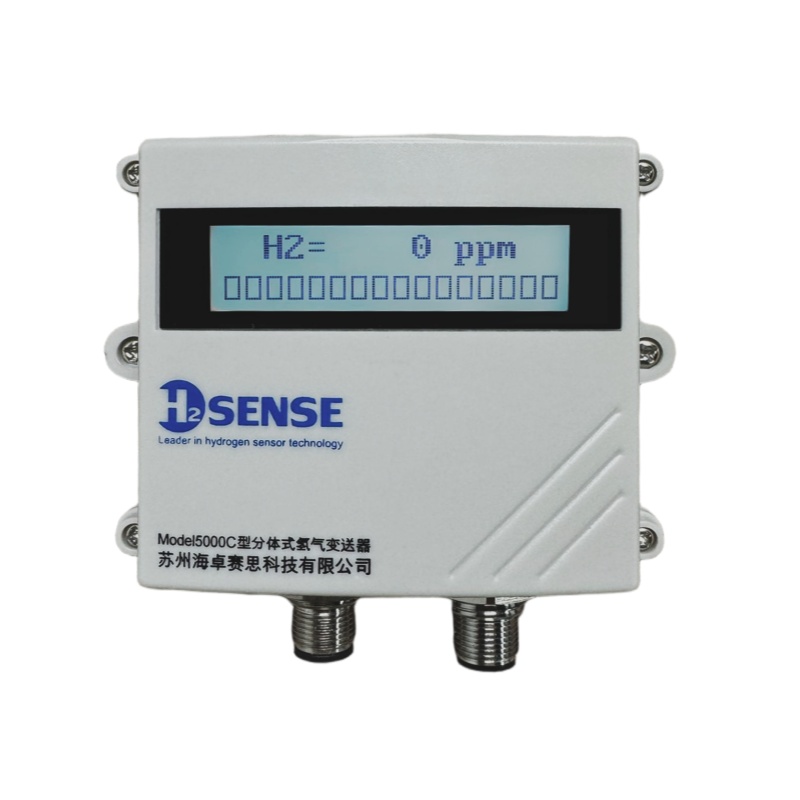Summarize
Dissolved Gas Analysis (DGA) has long been a cornerstone of transformer health assessment. Traditional methods involve periodic oil sampling and laboratory analysis, providing snapshots of the transformer's condition. However, these methods are time-consuming, labor-intensive, and only offer intermittent data. This is where Online DGA monitoring systems revolutionize the process. This blog aims to explore the advantages of Online DGA applications.

The Science of Dissolved Gas Analysis
The oil within a power transformer serves not only as an insulator but also as a coolant. As the transformer operates, thermal and electrical stresses can cause the oil and insulating paper to decompose, generating characteristic dissolved gases. These gases, including hydrogen (H2), methane (CH4), ethane (C2H6), ethylene (C2H4), acetylene (C2H2), carbon monoxide (CO), and carbon dioxide (CO2), act as early warning signs of developing faults. The concentration and ratio of these gases provide valuable insights into the type and severity of the problem.
Advantages of Online DGA Monitoring
Implementing Online DGA monitoring systems offers a paradigm shift in transformer management. Unlike traditional methods, these systems continuously monitor the dissolved gas content in real-time, providing a comprehensive and dynamic view of the transformer's health. This allows for early detection of incipient faults, enabling timely intervention and preventing costly failures.
Key Benefits:
Real-time Monitoring: Continuous data stream provides immediate insights into transformer condition.
Early Fault Detection: Identifies developing problems before they escalate into major failures.
Reduced Downtime: Enables proactive maintenance, minimizing unplanned outages.
Optimized Maintenance Scheduling: Facilitates condition-based maintenance, reducing unnecessary interventions.
Extended Transformer Lifespan: Proactive problem resolution prolongs the life of the asset.
Analyzing DGA Results and Making Informed Decisions
The data collected by Online DGA monitoring systems is only valuable if it is properly analyzed and interpreted. Several diagnostic methods have been developed to identify potential faults based on DGA results, including:
| Key Gas | Identifies fault types based on the concentration of specific gases (e.g., H2 for overheating). | Simple to understand and apply. | Can be ambiguous when multiple faults are present. |
| Rogers Ratio | Uses ratios of gas concentrations to diagnose faults (e.g., C2H2/C2H4, CH4/H2). | Provides more specific fault diagnosis than the Key Gas method. | Requires accurate gas measurements. |
| Dornenburg Ratio | Similar to Rogers, using different gas ratios. | Can be more effective for certain types of faults. | Requires accurate gas measurements. |
| Duval Triangle | Uses a triangular plot of gas concentrations to visually identify fault types. | Provides a clear visual representation of DGA data; easy to use and interpret. | May not be accurate for all types of faults. |
| IEC 60599 Standards | Provides guidelines for DGA interpretation and fault diagnosis based on international standards. | Offers a standardized and reliable approach to DGA analysis. | May require expertise in IEC standards and DGA interpretation. |
By carefully analyzing the DGA results and considering the specific operating conditions of the transformer, engineers can make informed decisions regarding maintenance, repair, and replacement. The benefits of using an Online DGA Monitor cannot be overstated.
The Importance of Hydrogen Monitoring
Hydrogen (H2) is often the first gas to appear in significant quantities when a transformer starts to develop a fault. Its presence can indicate:
Overheating: Localized hot spots in the winding or core.
Partial Discharge: Electrical stress in the insulation system.
Arcing: Severe electrical faults causing rapid decomposition of oil.
Monitoring hydrogen levels is critical for early fault detection. A sudden increase in H2 concentration warrants immediate investigation.

Beyond Hydrogen – Considering All Gases
While hydrogen is a key indicator, relying solely on H2 measurements can be misleading. A comprehensive Online DGA Monitor analyzes all key gases to provide a complete picture of the transformer's condition. Different fault types generate different gas signatures, and analyzing the ratios between these gases is crucial for accurate diagnosis.
Integrating DGA Data for Proactive Maintenance
The true power of Online DGA monitoring systems lies in their ability to integrate with existing asset management systems. By combining DGA data with other operational parameters, such as load, temperature, and voltage, a more complete understanding of transformer health can be achieved. This allows for proactive maintenance strategies that are tailored to the specific needs of each transformer, maximizing their lifespan and reliability. The accuracy of the Online DGA system plays a significant role in decision-making.
Conclusion
Online DGA monitoring systems represent a significant advancement in transformer health management. By providing continuous, real-time data on dissolved gas concentrations, these Online DGA monitoring systems enable early fault detection, reduced downtime, optimized maintenance scheduling, and extended transformer lifespan. Investing in this technology, specifically an Online DGA monitoring system, is a strategic decision that can significantly improve the reliability and efficiency of power networks. The proactive approach afforded by Online DGA Monitor systems results in cost savings and greater peace of mind.












